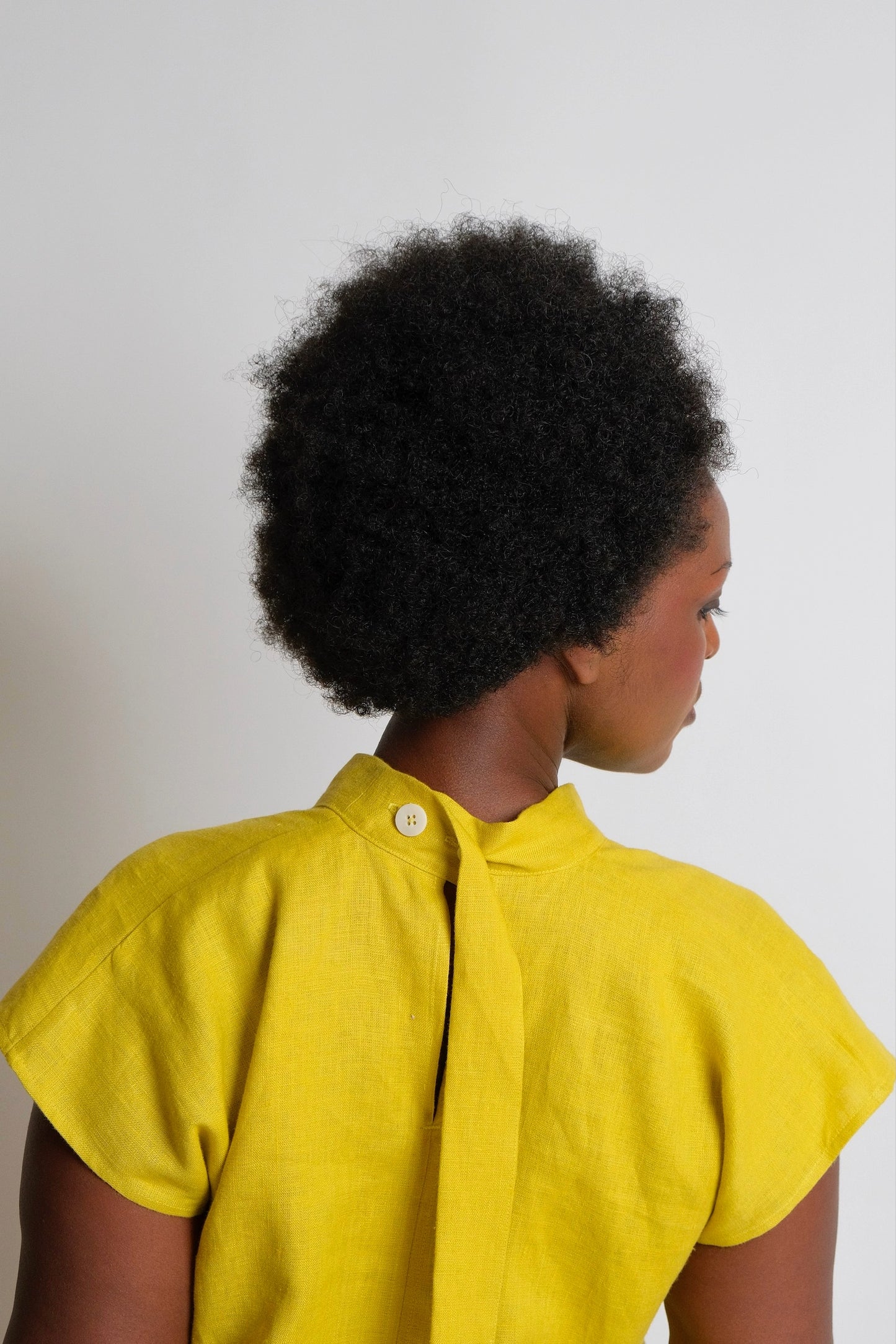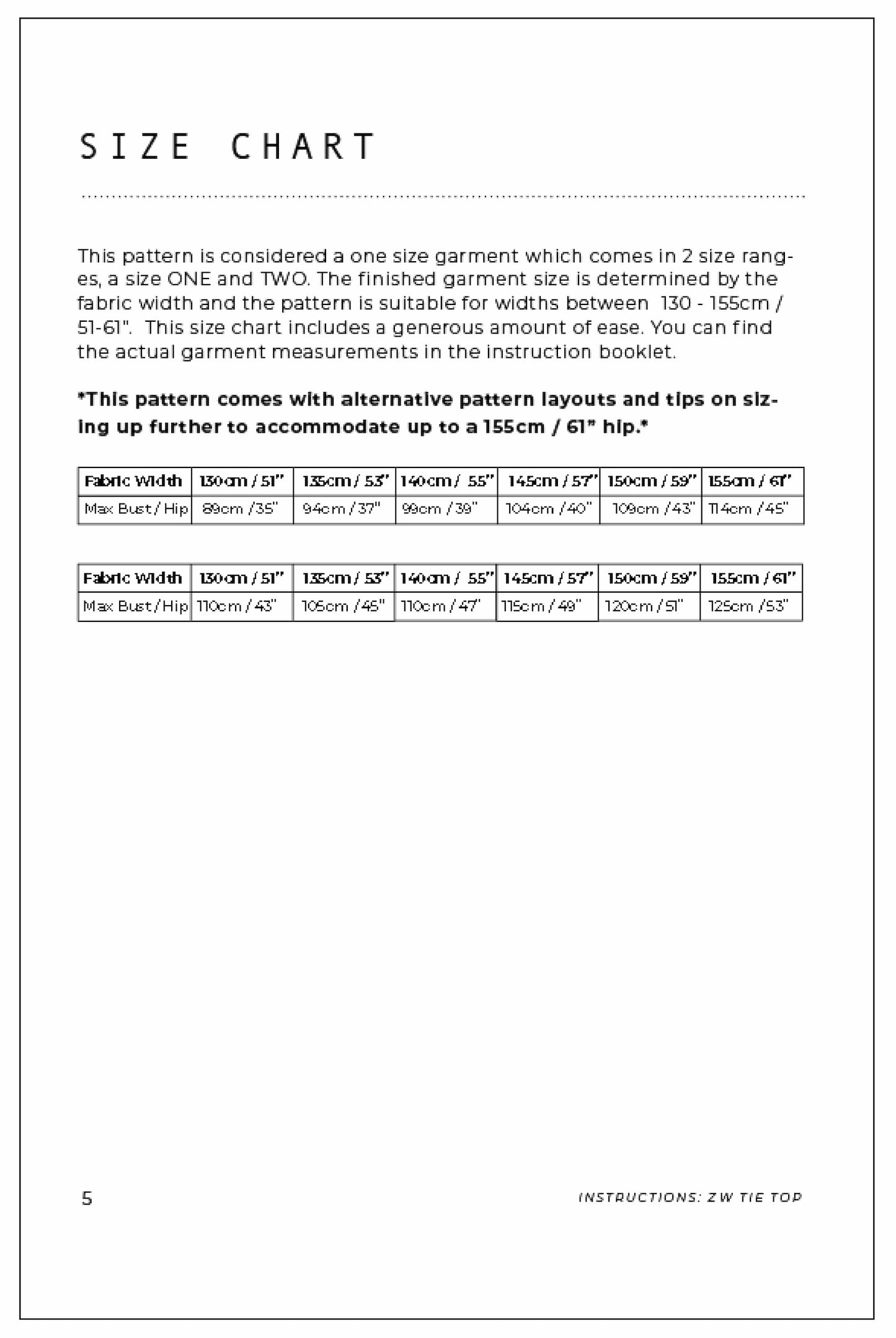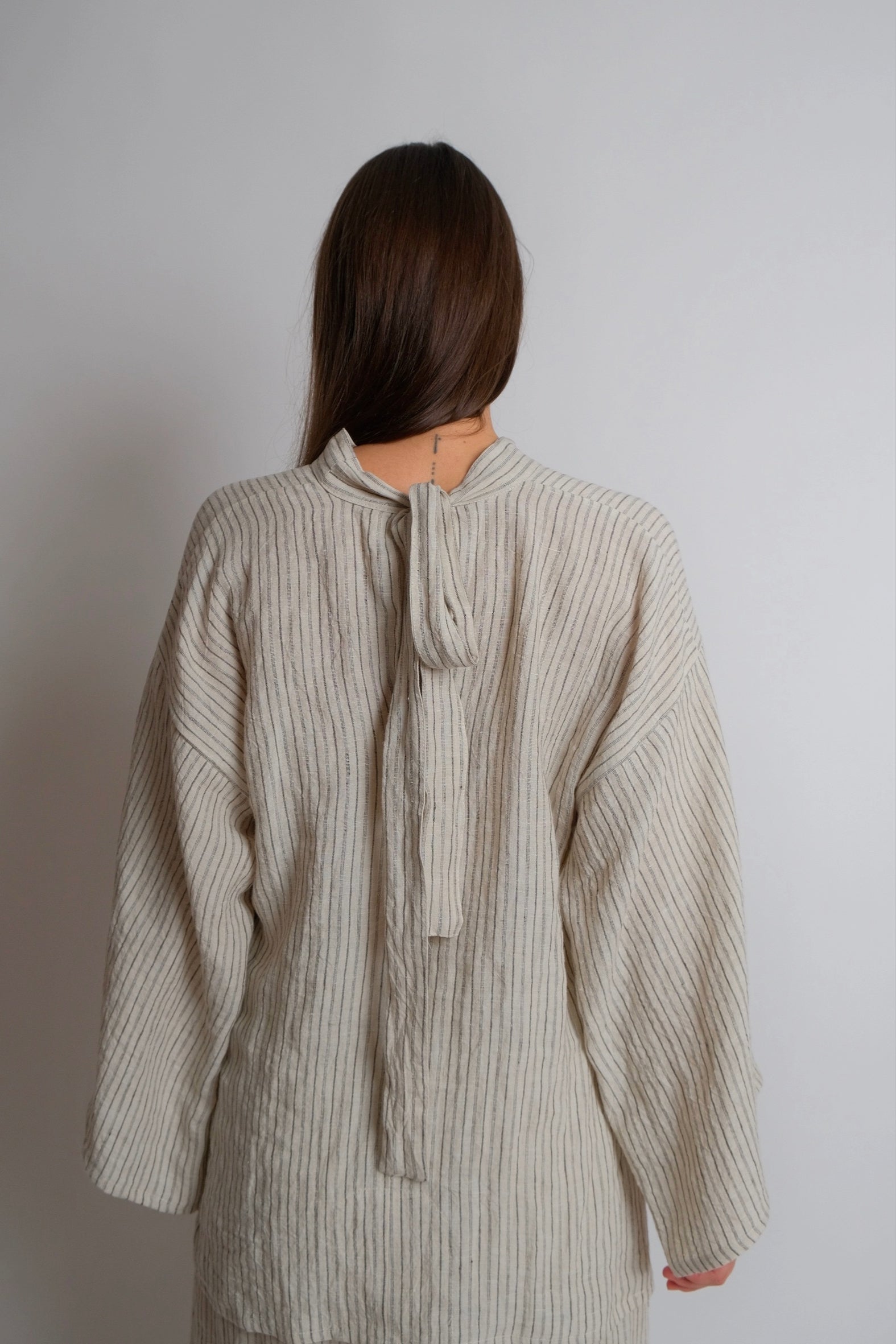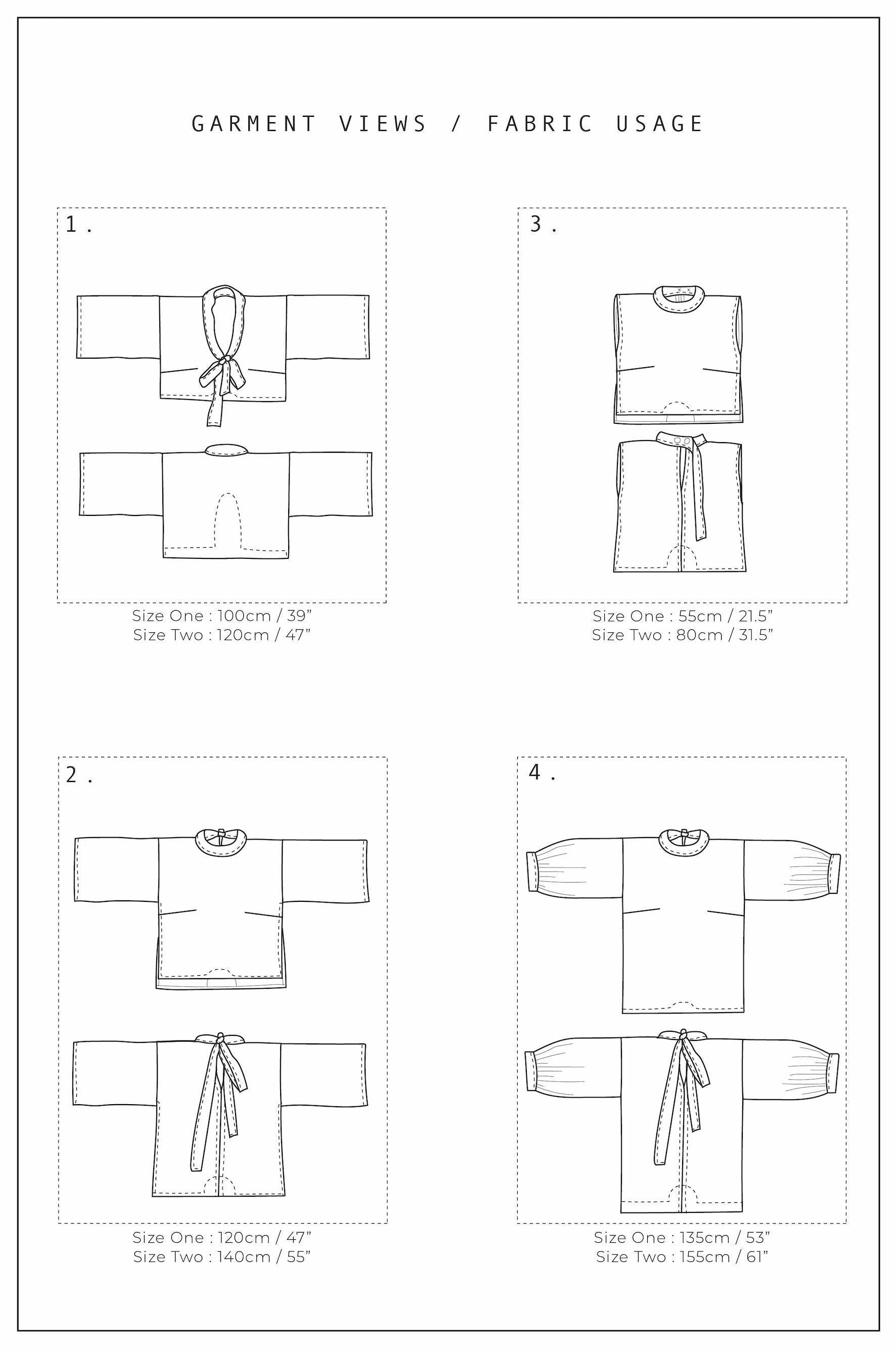Birgitta Helmersson
ZERO WASTE TIE TOP | PDF & Paper Sewing Pattern
ZERO WASTE TIE TOP | PDF & Paper Sewing Pattern
Couldn't load pickup availability
The ZW Tie Top by Birgitta Helmersson is an oversized top with a relaxed fit and features an attached neck band which turns into a tie that can be positioned at the front or back neck. It includes instructions on how to add side splits at the hem as well as a gathered cuff to the sleeves.
Check out Birgitta's super handy tutorial Sewing the ZW Tie Top.
This pattern comes in 2 size ranges, 2 neck options and 3 garment lengths.
Available to purchase in two formats:
*PDF Sewing Pattern. You will not receive a physical pattern, you will be emailed a link to download the pattern after purchase.
*Paper Sewing Pattern. You will receive a printed workbook measuring 20cm x 25cm. The folder is designed as a zero waste layout on A2 card which opens out to include traceable templates and a handy storage folder containing the instruction booklets for both the sewing and cutting steps.
Description
Description
The finished width of this garment is determined by the fabric width you use. There are 2 size options for this top, a size ONE and TWO with a maximum hip size of 125cm / 53". The pattern also includes additional instructions to size up further to a 155cm / 61" hip.
Sewing level: Advanced beginner
PDF Contents: Includes measurements in both metric (centimetres)and US imperial (inches). Booklet/Templates are printable on both A4 or US Letter paper size.
Fabric + Notions
Fabric + Notions
Fabric type: Light to mid weight cotton or linen as well as a midweight silk or viscose. Both lightly structured and drapey fabrics will work well.
Fabric Requirements:
Recommended width
- 130 - 155cm / 51 - 61"
Recommended yardage
Size One
- View 1: 100cm / 39"
- View 2: 120cm / 47"
- View 3: 55cm / 21.5"
- View 4: 135cm / 53"
Size Two
- View 1: 120cm / 47"
- View 2: 140cm / 55"
- View 3: 80cm / 31.5"
- View 4: 155cm / 61"
*This is a guide only, these yardage requirements are different for each garment you are working on and may change if you want to adjust the lengths of the sleeves and body. Refer to the Instruction Booklet for more details on width and yardage requirements.
Notions: View 3 requires 2 x buttons 18mm / 0.75" wide
Size Chart
Size Chart
This is an oversized shape with 2 size ranges. The maximum bust/hip for each size depends on the fabric width you use. Suitable for up to a 125cm / 53" hip. There are also additional pattern layouts in the Instruction Booklet for making adjustments to the pattern to size up further to a 155cm / 61" hip.
Size One
- Fabric width 130cm / 51" = max bust/hip 89cm / 35"
- Fabric width 135cm / 53" = max bust/hip 94cm / 37"
- Fabric width 140cm / 55" = max bust/hip 99cm / 39"
- Fabric width 145cm / 57" = max bust/hip 104cm / 40"
- Fabric width 150cm / 59" = max bust/hip 109cm / 43"
- Fabric width 155cm / 61" = max bust/hip 114cm / 45"
Size Two
- Fabric width 130cm / 51" = max bust/hip 110cm / 43"
- Fabric width 135cm / 53" = max bust/hip 105cm / 45"
- Fabric width 140cm / 55" = max bust/hip 110cm / 47"
- Fabric width 145cm / 57" = max bust/hip 115cm / 49"
- Fabric width 150cm / 59" = max bust/hip 120cm / 51"
- Fabric width 155cm / 61" = max bust/hip 125cm / 53"
Method
Method
Zero waste pattern cutting is a method of pattern drafting where you utilise a length of fabric end to end by strategically planning your pattern pieces so that everything is used. This pattern is ‘paperless’ meaning that no printing of large pattern pieces is required. Instead of using full scale paper patterns, you draw your pattern pieces directly onto your fabric with the aid of a cutting plan and small templates.
Advantages to this method include:
More flexibility
This method allows for easy changes such as using different fabric widths and making simple fit and design changes yourself. Using patterns that fit into a zero waste square or rectangular block is a very efficient way to work. It means that it is easier to patchwork together remnants or use left over fabrics you already have lying around.
An easy way to learn to self draft your own patterns
Working this way will help you to start building a toolbox of skills, and you will learn an alternative method of self drafting your own sewing patterns, which are super easy for beginners to understand.
Less fabric and paper waste














We're sew social
Don't be shy. We would love to see what you are making. Tag us @paper.scissors.cloth on Instagram or Facebook and join the posse! #pscposse #makeitbetter













